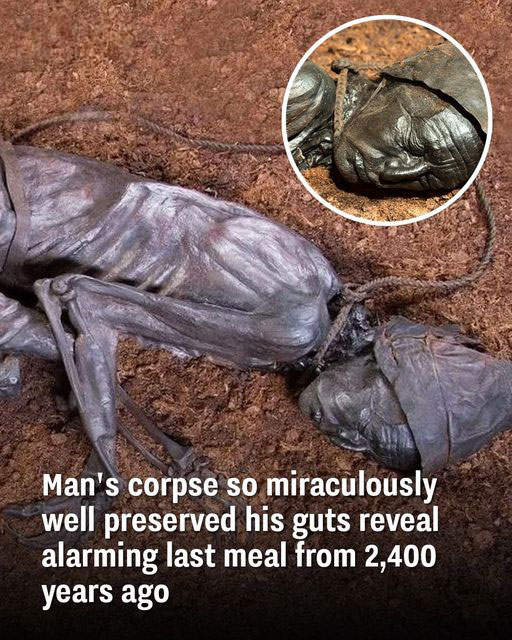Imagine finding a body so well preserved that you assume it must have been recently buried. So recent in fact, that you could still deduce what he ate for his last meal. Believe it or not, this is exactly what happened in the 1950s. The discovery of the Tollund Man has led to a greater understanding of how the man died.
The Miraculous Corpse

Peat cutters found the corpse preserved in a bog around 12km from Silkeborg in Denmark. The corpse was so well-preserved that the cutters assumed that he must have recently been murdered. However, after the corpse had been carbon dated, it was discovered to be an ancient artifact. Dubbed the Tollund Man, the corpse was found with a noose around its neck. This has led to the hypothesis that he may have been the victim of a ritual sacrifice.
The Autopsy of the Tollund Man

The mummified corpse belonged to a five-foot-three male. He lived and died during the early Iron Age, around the fifth century BCE. The autopsy confirmed the scientists’ belief that he perished due to being hung. They further revealed that it was because of the acidity of the peat bog that the Tollund Man has been so well preserved. The stomach and brain of the mummified corpse have been so well-preserved that scientists were able to examine the stomach in 2021 and determine what the man had eaten for his final meal. Scientists had previously been able to find out what a mummified corpse had eaten 2,400 years ago, only 24 hours before he died.
The Study

The findings of the Tolluns Man study were published in July 2021 on the Cambridge University Express, an online publication. The study was led by Nina H. Nielsen, the Silkeborg Museum’s head of research. It was regarded as the most comprehensive analysis of a bog body gut ever undertaken. Titled The Last Meal of Tollund Man, the paper chronicled how the researchers had employed a new manner of analyzing pollen, plant macrofossils, proteins, and steroid markers found in the gut so they could determine what he had eaten before dying. [1]
The Diet of the Tollund Man

While researchers have an idea of the average diet consumed by the people of that time, this study provided more information about what the Tollund Man ate before his death. This in-depth insight is what makes it so interesting for the researchers involved. The study revealed that the Tollund man consumed porridge and fish on his final day. The porridge was found to contain flax and barley. They were also able to determine that he was riddled with parasites due to the abundance of intestinal worm eggs in his gut.
Additional Findings

The researchers also noted the presence of pale persicaria seeds. This detail was important to their ritual theory, as these seeds were typically removed from the grain and only included for rituals. This boosted their belief that it was indeed a ritual murder, allowing them to cast new light on a long-buried subject. The researchers believe this study will go a long way in understanding the lives and deaths of the Early Iron Age Danish people.
How Bogs Preserve Bodies

Several hundred mummified corpses have been discovered preserved in peat bogs, the majority in western and northern Europe. These bogs are free of oxygen, a state that helps to prevent any decay from taking place. Bogs also contain large amounts of naturally occurring chemicals known as tannins. This chemical is usually used to tan leather products. They preserve organic materials, such as the contents and soft tissues of the digestive tract. [2]
Thanks to this preserving property, the researchers were able to determine the contents of the Tollund Man’s gut. While the Tollund Man had been hung to death, other bog bodies have also been discovered indicating other types of murder. These ritualistic killings included throats that were cut, entrails pulled out, and bones that had been broken. These bodies are usually found in places where people cut peat. They also need to determine whether these cuts were perhaps produced by modern peat cutters recently.
The Bottom Line About the Tollund Man

Artifacts such as the Tollund Man reveal new facts about life from the Iron Age. [3] Thanks to the bog environment, bodies such as the Tollund Man have been perfectly preserved. This has enabled researchers to constantly update their knowledge. Not only have we learned more about what they eat, but also about the complex rituals that formed an integral part of their lives. Who knows how many bog bodies are still to be discovered – and what they may still teach us about the past?
